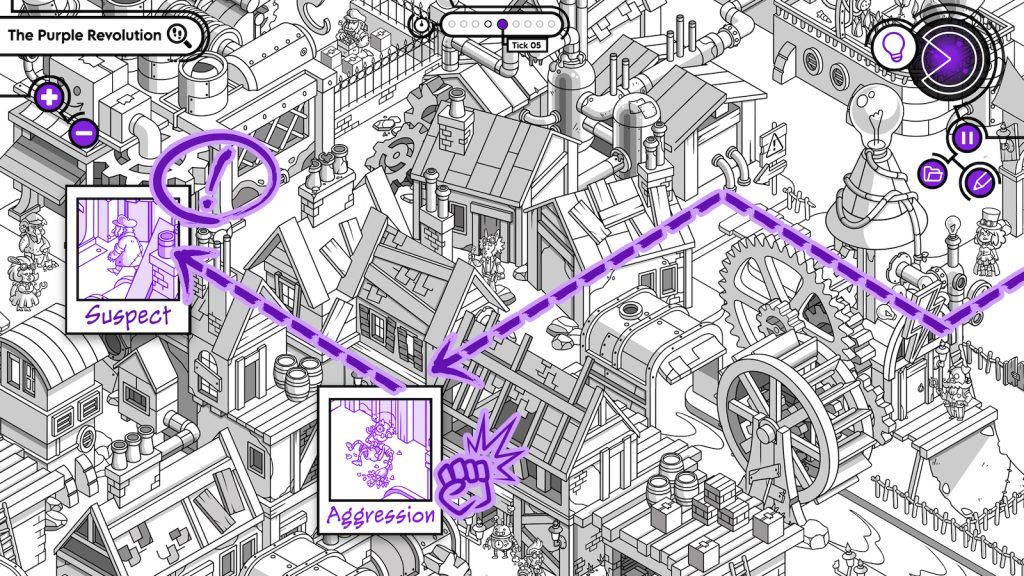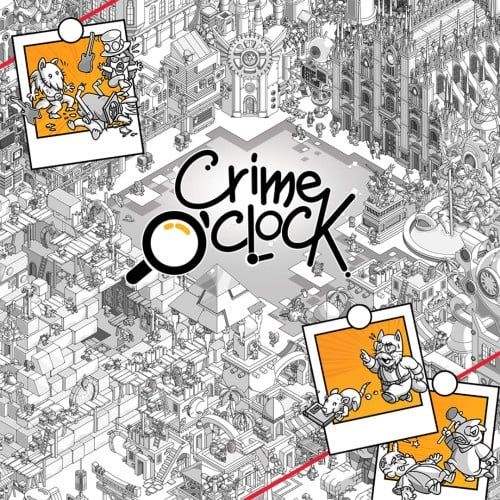Crime O’Clock Review
There was a time when puzzle books like ‘Where’s Waldo?’ and Usborne Adventures were staples in a child’s pastime activities. However, as the interactive sector evolved, many ditched print media products for smart devices. Looking to combine elements of both, Crime O’Clock takes the picture puzzle format a step further as you aim to solve cases through methodical tracking of criminal activity. Will this detective tale manage to capture the spirit of yesteryear or will it be a corrupt attempt at modernizing a classic?
Your goal is to investigate a number of crimes that occur across different time periods within a large area. While offenses may at first seem independent, soon you determine that there are irregularities in cases that link them together. Each story is simple and gives just enough context to support the mystery which helps to reinforce the family-friendly nature of the game. The over-arching narrative delves into more complex ideas which seem a little out of place for the casual atmosphere that the game presents. Younger gamers may struggle to comprehend the themes and therefore lose interest in the story.
Take a Look
Like traditional ‘Where’s Waldo?’ books, you must scour a rich and dense map to find your objective. In the case of Crime O’Clock, you start at the crime scene and slowly gather a wider picture of the incident upon the discovery of clues. Time edges forward or back and you’ll begin to trace the whereabouts of the victim and potential perpetrators. As the clock moves, all characters who inhabit the area do as well which gives a glimpse of a number of stories. Throughout, there are plenty of references to famous tales and characters which entices you to search every spot. As several crimes happen on the map, it’s a thrill to encounter the whereabouts of culprits of previous cases at different points in time.

The further you delve into an incident, the more notes and comments are added to the environment. The snippets of color are a great way to focus your investigation and work out what to do next. Unfortunately, as you progress with missions, the challenge increases through the removal of logical sequences. Rather than relying on the path where the character could walk, a number of segments require you to scan the entire area for a particular item. If you need support, there is a hint system within. These are in stages and give you subtle clues to help you with the puzzle. If you reach the last clue, this will pretty much tell you the exact location so that you can progress. This is a great feature as frustration can emerge when endlessly searching for the next point.
Trace and Retrace
Although Crime O’Clock attempts to change the formula, it doesn’t alter the main mechanic enough to maintain interest. The game is easy to pick up and play but, due to the repetitive cycle, it is not suited to longer sessions. Mini-games intersperse segments which help to break up the monotony that can reside from hunting for clues. These tasks are simple and offer little challenge as you marry images or link simple patterns. Certain sections will have you twist or turn objects to match markings, while this should be low-stakes fun, all difficulty is removed due to the correct location being instantly visible.

The art direction is wonderful. Each compact area is overflowing with detail and gives you an insight into the world. The cartoon inhabitants are leading lives that work within the theme and add further incentive to look at every nook and cranny. The music maintains an investigative tone while also including elements that link to the time period. It’s a clean presentation and due to this is extremely accessible. Controls are simple and therefore anyone can get involved. Even without a traditional multiplayer feature, you can play with the family as they can aid your search for the objective. Due to the simple premise, it is easy to encourage involvement, however, the repetitive design means that you will grow tired quite quickly.
Crime O’Clock’s lovely art direction and charming premise can’t save the game from its repetitive gameplay loop. While at first, it delivers a wave of nostalgia, it soon drowns in its concept. Even though it’s extremely accessible and fun to play with others, it quickly loses momentum as it struggles to innovate on the idea.
***A Nintendo Switch code was provided by the publisher***
The Good
- Lovely Art Style
- Family Friendly
- Novel Idea
The Bad
- Repetitive Gameplay
- Simple Mini-Games
- Quickly Loses Steam

